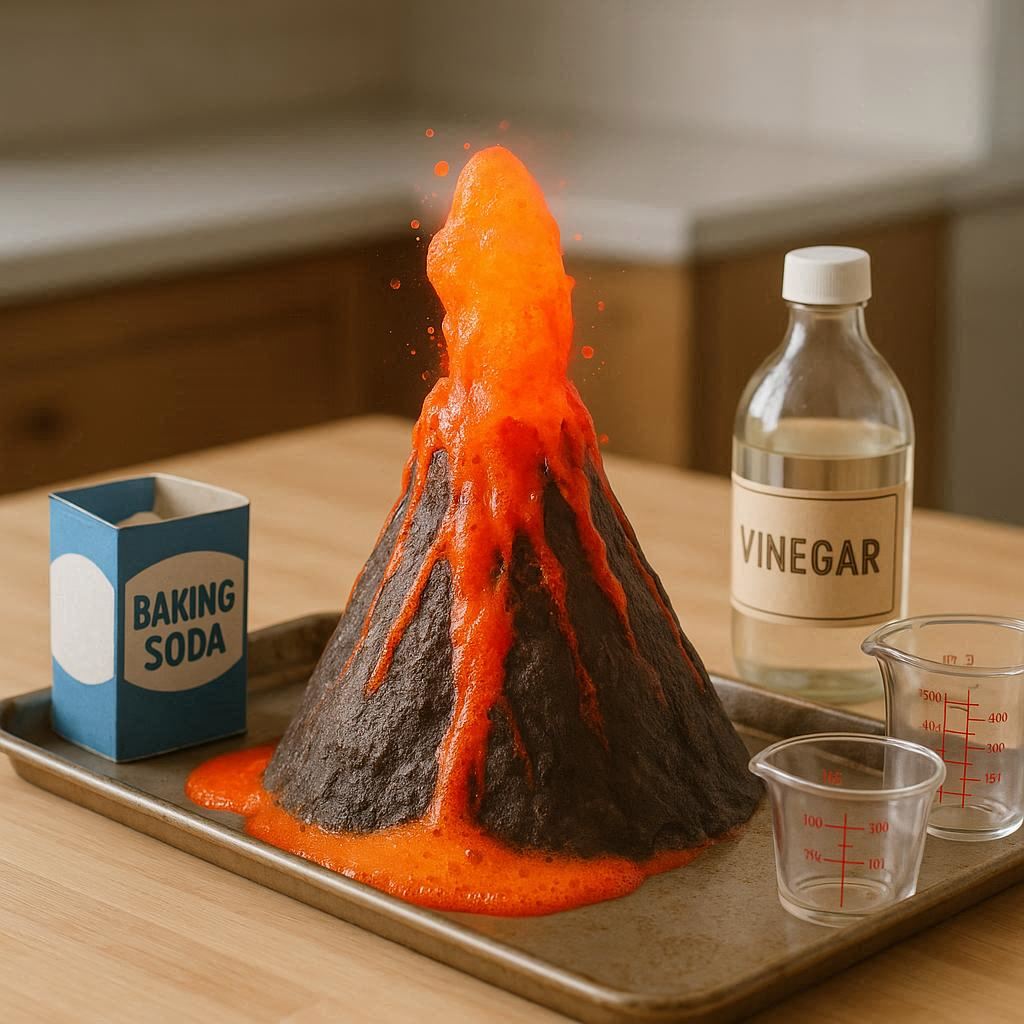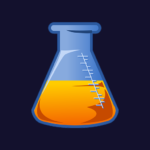Flame tests are one of the most visually striking experiments in chemistry, offering a glimpse into the hidden world of elements and their unique properties. When metal salts are exposed to a flame, they emit vibrant colors that act as a chemical fingerprint, helping us identify the presence of specific metals. This phenomenon, while dazzling, is rooted in the fundamental principles of atomic structure and electronic transitions. In this blog post, we’ll delve into the science behind flame tests, explore the unique characteristics of various metal salts, and compare their combustion behaviors.
The Science Behind Flame Tests
Before we dive into the colorful aspects of flame tests, it’s essential to understand the underlying science. Flame tests rely on the principle of atomic emission spectroscopy. When a metal salt is heated in a flame, the energy from the heat excites the electrons in the metal ions. As these electrons return to their ground state, they release excess energy in the form of light. The color of this emitted light corresponds to the specific metal, as each element has a unique atomic structure that dictates the wavelengths of light it emits.
This process can be summarized in three key steps:
- Excitation: The electrons in the metal ions absorb energy from the flame and move to higher energy levels.
- Emission: As the electrons return to their original energy levels, they release this excess energy as photons.
- Spectral Emission: The wavelength of the emitted light determines the color observed during the flame test.
This scientific foundation explains why different metals produce distinct flame colors. For example, sodium ions emit a bright yellow light, while copper ions produce a blue‑green hue. These unique emissions allow chemists to identify metals with remarkable accuracy.
Common Metal Salts and Their Flame Colors
Now that we’ve explored the science, let’s take a closer look at some of the most common metal salts and the colors they produce in flame tests. Each metal has its own signature, making this a fascinating area of study for both professionals and enthusiasts.
1. Sodium (Na)
Sodium is one of the most recognizable metals in flame tests due to its vivid yellow color. This is because sodium ions emit light at a wavelength of around 589 nm, which corresponds to the yellow region of the visible spectrum. Sodium is so prominent in flame tests that it’s often used as a reference point for other metals.
Interestingly, the yellow color produced by sodium is so intense that it can sometimes masks the colors of other metals, especially if they’re present in smaller quantities. This makes sodium a challenging but fascinating element to work with in combustion experiments.
2. Copper (Cu)
Copper is known for its stunning blue‑green flame in combustion tests. This color arises from the electronic transitions in copper ions, which emit light in the 450–495 nm range. Copper’s flame color is particularly valuable in chemistry because it’s often used to identify copper‑containing compounds in a variety of applications, from geological analysis to industrial quality control.
One of the unique aspects of copper’s flame test is its ability to produce a range of colors depending on the concentration of the ions and the temperature of the flame. In some cases, copper can also produce a reddish‑orange tint, adding to the complexity and beauty of its spectral emissions.
3. Potassium (K)
Potassium produces a pale lilac or lavender color when subjected to a flame test. This color is less intense than sodium’s yellow, but it’s still quite distinct and easy to identify. Potassium’s emission spectrum peaks at around 404 nm, which is in the violet region of the visible spectrum.
One of the intriguing aspects of potassium is its ability to produce different shades depending on the purity of the sample and the conditions of the test. For example, impure potassium samples may exhibit a pinkish tint due to the presence of other metals or contaminants.
4. Calcium (Ca)
Calcium is another metal that produces a characteristic flame color, typically a bright orange‑red. This color is due to the emission of light at around 610 nm, which falls in the orange‑red region of the spectrum. Calcium’s flame test is particularly useful in geological applications, where it’s often used to identify calcium‑rich minerals like limestone and gypsum.
Interestingly, calcium’s flame color is also influenced by its chemical environment. For example, calcium ions in different compounds may emit slightly different shades of orange‑red, depending on the presence of other elements. This makes calcium a versatile and informative element in combustion studies.
5. Barium (Ba)
Barium is known for its striking apple‑green flame in combustion tests. This color is produced by the emission of light at around 490 nm, which falls in the green region of the spectrum. Barium’s flame test is particularly useful in industrial applications, where it’s often used to detect the presence of barium in ores and alloys.
One of the unique aspects of barium is its ability to produce different shades of green depending on the concentration of the ions and the temperature of the flame. At higher concentrations, barium can even produce a bluish‑green tint, adding to the complexity of its spectral emissions.
6. Lithium (Li)
Lithium produces a delicate crimson or dark red color in flame tests. This color is due to the emission of light at around 680 nm, which is in the red region of the spectrum. Lithium’s flame test is particularly useful in analytical chemistry, where it’s often used to identify lithium‑containing compounds in pharmaceuticals and battery materials.
Interestingly, lithium’s flame color is relatively faint compared to other metals like sodium and calcium. This makes it more challenging to detect, especially in samples where lithium is present in small quantities. However, the unique crimson color of lithium makes it easily distinguishable when present in sufficient amounts.
7. Strontium (Sr)
Strontium is known for its brilliant red flame in combustion tests. This color is produced by the emission of light at around 640 nm, which falls in the red region of the spectrum. Strontium’s flame test is particularly useful in fireworks and pyrotechnics, where it’s often used to create vibrant red displays.
One of the unique aspects of strontium is its ability to produce different shades of red depending on the temperature and composition of the flame. In some cases, strontium can even produce a reddish‑purple tint, adding to the beauty and complexity of its spectral emissions.
Comparing Metal Salts in Flame Tests
While each metal salt has its own unique flame color, there are some general trends and patterns that can help us compare and contrast them. Here are a few key observations:
- Color Intensity: Some metals, like sodium and copper, produce very intense flame colors that are easy to identify even in small quantities. Other metals, like lithium and potassium, produce less intense colors that may be more challenging to detect.
- Color Purity: The purity of the metal salt can significantly impact the clarity and intensity of the flame color. Impurities can introduce additional colors or mask the true emission of the metal ions.
- Chemical Environment: The chemical environment in which the metal ions are present can influence the color produced in the flame test. For example, the presence of other metals or compounds can alter the emission spectrum and produce different shades.
- Temperature Dependence: The temperature of the flame can also impact the color produced in the test. Higher temperatures may shift the emission spectrum and produce different colors or shades.
Real‑World Applications of Flame Tests
Flame tests are not just fascinating experiments; they also have a wide range of practical applications in various industries. Here are a few examples:
- Geological Analysis: Flame tests are often used to identify minerals and ores in geological samples. For example, the presence of calcium in a sample can indicate the presence of limestone or gypsum.
- Industrial Quality Control: Flame tests are used in industrial settings to detect the presence of metals in alloys and other materials. For example, the presence of copper in an alloy can indicate its thermal and electrical properties.
- Fireworks and Pyrotechnics: The vibrant colors produced in flame tests are the basis for the colorful displays in fireworks and pyrotechnics. Different metals are used to create a wide range of colors, from the bright yellow of sodium to the brilliant red of strontium.
- Analytical Chemistry: Flame tests are used in analytical chemistry to identify and quantify metal ions in a variety of samples, from pharmaceuticals to environmental samples.
Safety Considerations
While flame tests are undeniably fascinating, they also involve the use of open flames and chemical compounds, which can be hazardous if not handled properly. Here are a few safety considerations to keep in mind:
- Handle Chemicals with Care: Many metal salts are toxic or reactive, so it’s important to handle them with care and wear appropriate protective equipment, including gloves and goggles.
- Use Proper Ventilation: Some metal salts release toxic fumes when burned, so it’s important to conduct flame tests in a well‑ventilated area.
- Avoid Combustible Materials: Open flames can ignite nearby combustible materials, so it’s important to keep the surrounding area clear of flammable substances.
- Follow Proper Procedures: Always follow proper procedures when conducting flame tests, and seek guidance from a qualified professional if you’re unsure about any aspect of the process.
Conclusion
Flame tests are a captivating and informative way to explore the properties of metal salts and their unique chemical characteristics. By comparing the colors produced by different metals, we can gain a deeper understanding of their atomic structures and the ways in which they interact with energy. Whether you’re a seasoned chemist or a curious student, flame tests offer a unique window into the hidden world of elements and their combustion behaviors.
As we continue to explore and refine our understanding of flame tests, we may uncover new insights into the behavior of metals and their applications in various industries. From the bright yellow of sodium to the brilliant red of strontium, each metal salt has its own story to tell—one that is as fascinating as it is colorful. So the next time you witness a flame test, remember the science behind the spectacle and the incredible diversity of the elements that make it possible.



